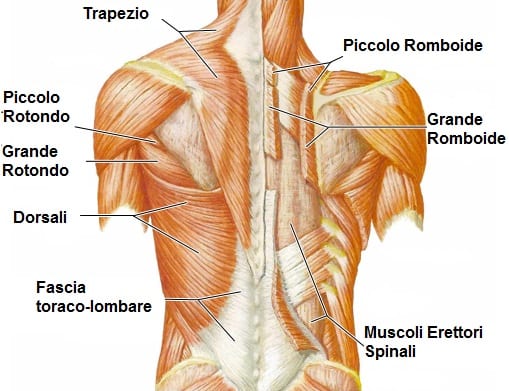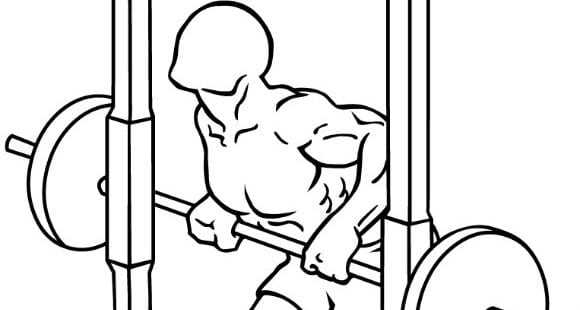In the old school training cards, an exercise that has now almost fallen into oblivion was almost omnipresent: the bent over row, also known as a flexed-torso rowing machine, or a barbell rowing performed with the back parallel (90 °) to the ground.
Although it is mistakenly confused with the common barbell row (rowing with barbell), we are talking about exercises that have not negligible differences.
Muscles involved
The bent over row is a complete exercise capable of stimulating all the muscles of the back, with particular emphasis on the lats and trapezius. However, muscle involvement can be different depending on the execution technique.
execution
Bent over row is performed by placing your feet shoulder-width apart, or slightly wider, and with your legs slightly bent. The back will be parallel to the ground, therefore tilted 90 °, or a little less. It is important to preserve the natural curvature of the back, and to keep the abdomen contracted.
As for the grip, it represents the most variable part of the mechanics of the exercise; in general, a medium grip is adopted, with the elbows close to the torso, and the barbell is pulled towards the sternum or upper abdominal area, adding the shoulder blades to the concentric end.
Some variants see the movement end at chest height, or allow the use of a wider handle, and therefore with the elbows more widely spaced. Obviously, the execution greatly influences the muscles that will be mainly involved in the movement. Indeed:
- An execution with the elbows close to the trunk and the barbell that ends its movement at the bottom, away from the chest (abdominal area, near the navel), stimulates the great dorsal muscle more; the movement is also assisted by the lower bundles of the trapezius.
- On the other hand, when the elbows are brought outwards, and therefore a little further away from the trunk, stimulation of the posterior deltoid, infraspinatus and rotators increases, together with the rhomboids and the trapezius. This execution, however, increases the load on the lumbar area.

Looking at photos and videos of old-school bodybuilders, we will notice that they used to perform the exercise on a rise, in order to start the movement with the barbell at the same height as the feet, and therefore guarantee a greater range of motion.
Now, including the execution of the bent over row, the differences with the barbell row should appear evident; confusing one exercise with the other is quite incorrect, especially considering that the barbell rowing is performed with the back at an inclination of about 45 degrees, and starting not from the ground, but approximately from the knee.
Risks and Benefits of Bent Over Row
The possible risks on the lower back, the possibility of being replaced by other exercises such as the bench row or pulley, have made this exercise almost completely disappear from gyms all over the world.
The bent over row generates shear forces on the lower back; therefore it is crucial to incorporate the exercise into our routines with progression, without haste, gradually adding weight and keeping the execution technique impeccable. Thus, by respecting these precautions, and strengthening the core muscles with other movements, we will be able to successfully implement this formidable exercise.
An interesting variant is the one proposed by the American coach Glenn Pendlay, precisely called pendlay row, which consists in placing the barbell back on the ground at the end of the concentric phase, and consequently avoiding the eccentric or negative phase of the movement. This variant has 2 advantages:
- Eliminating the eccentric phase eliminates much of the tension that weighs on the lower back;
- Resting the barbell at each rep (just like in the deadlift) reduces the risk of cheating.

To conclude, we recall another variant of bent over row: the lying row, that is the rowing performed lying on a flat bench; this movement protects the lower back even more, as you position yourself with the chest resting on the bench, but the rom is significantly reduced compared to the other two variants.
Conclusion
The bent over row is undoubtedly a complete exercise which, if performed correctly and with the right precautions (which after all must be given to each exercise) can guarantee great satisfaction in terms of hypertrophy and general strength. Moreover, if you are passionate about old school training, it is definitely an exercise that cannot be missing in your routine.


























